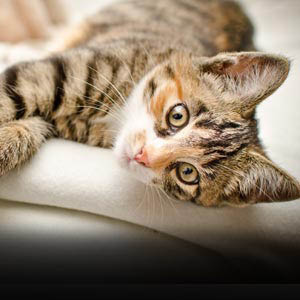How to Understand Your Cat’s Body Language

Cats can be very complex pets to have. Most people that have cats sometimes have a hard time understanding just what it is that he or she wants. Understanding your cat’s body language can be hard, but with a little practice you can start to figure out what your cat wants. Making sure that your cat has everything they need in terms of food, water and an area to go to the bathroom, cat also need affection. Sometimes your cat might be trying to tell you something from their body language which you might not understand. More importantly being able to understand your cat’s body language can also help you identify any health issues early on.
Instructions
-
1
Examine the Ears:
A cat has a multitude of muscles in and around their ears. If you take time out you will begin to understand what the different ear positions mean in terms of what you cat might be thinking or feeling at a given moment. If your cat’s ears are pointing forward and not moving that usually means your cat is attentive. However, if the ears are twitching that could be a sign that your cat is stressed out about something. Ears that are not pointing upward and are relaxed usually means that your cat is content or happy. Examining the position of your cat’s ears can definitely help you get a better understanding of their body language. -
2
Examine Eyes:
Looking at your cat’s eyes as this is also a very good way to understand your cat’s body language. If the eye slits are small then your cat is either frightened or angry. The same is the case if their eyes are wide. Cat’s eyes are also a good way of seeing if there are any potential health issues troubling your cat. -
3
Examine Tail:
Take a good look at your cat’s tail as it can help you understand your cat’s body language easily. When a cat’s tail is up in the air and moving that usually means that they are happy. However, if your cat’s tail is between his or her legs, that can mean submissiveness. If your cat’s tail is arched and curled in the back that can usually mean aggressive or attentive behaviour. -
4
Examine Entire Body:
Examine your cat’s entire body like the shoulders and head. This can also help you better understand your cat’s body language. Being able to understand your cat can definitely help you take better care of your pet and ensure that he or she has everything they need to be healthy and happy in your home.







